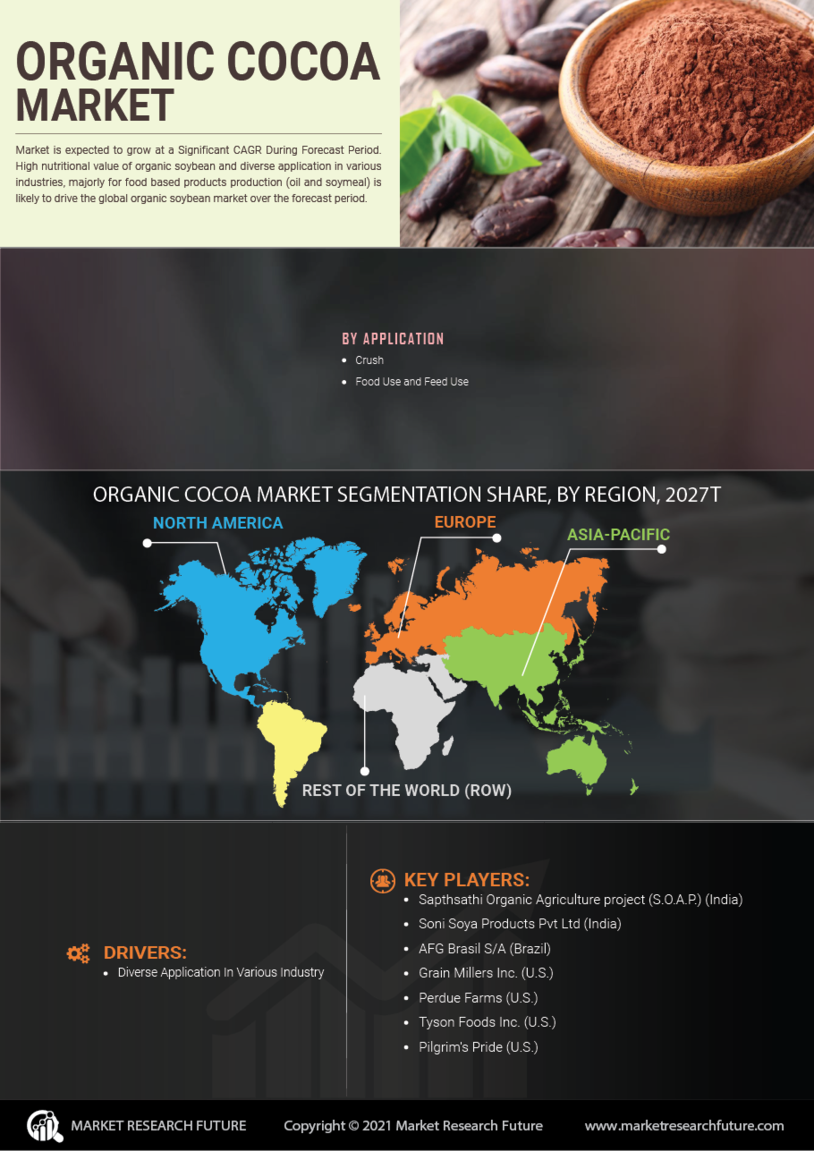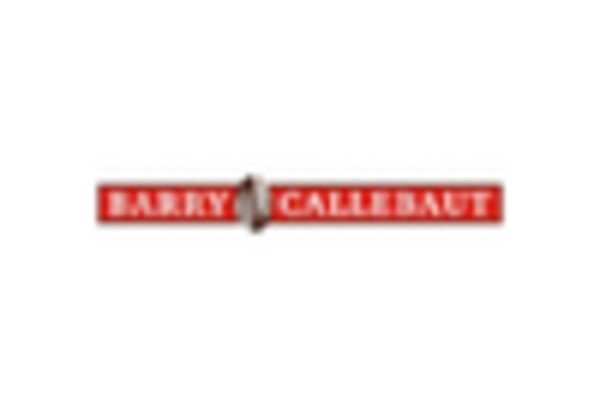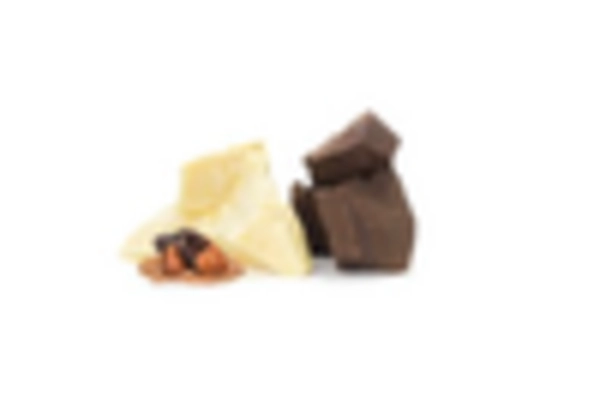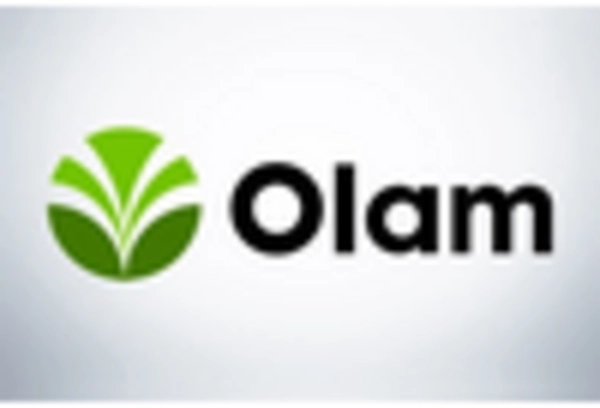Health Benefits Awareness
The rising awareness of health benefits associated with organic cocoa is significantly influencing the Organic Cocoa Market. Research indicates that organic cocoa is rich in antioxidants and flavonoids, which are linked to various health benefits, including improved heart health and cognitive function. As consumers increasingly seek healthier food options, the demand for organic cocoa products, such as dark chocolate and cocoa powder, is on the rise. In 2025, the organic cocoa segment is expected to capture a larger share of the overall cocoa market, driven by health-conscious consumers. This trend suggests that manufacturers may focus on developing innovative products that highlight the health benefits of organic cocoa, further propelling the growth of the Organic Cocoa Market.
Sustainability Initiatives
The increasing emphasis on sustainability within the Organic Cocoa Market is driving demand for ethically sourced cocoa. Consumers are becoming more aware of the environmental impact of conventional cocoa farming, which often involves deforestation and harmful agricultural practices. As a result, brands are prioritizing sustainable sourcing, which not only appeals to eco-conscious consumers but also aligns with regulatory frameworks promoting sustainable agriculture. In 2025, the market for organic cocoa is projected to grow at a compound annual growth rate of 5.2%, reflecting a shift towards sustainable practices. This trend is likely to encourage more farmers to adopt organic methods, thereby enhancing the overall supply chain and contributing to the growth of the Organic Cocoa Market.
Technological Advancements in Farming
Technological advancements in farming practices are playing a crucial role in shaping the Organic Cocoa Market. Innovations such as precision agriculture and sustainable farming techniques are enabling cocoa farmers to increase yields while minimizing environmental impact. These advancements not only enhance the efficiency of organic cocoa production but also contribute to the overall sustainability of the industry. In 2025, the integration of technology in organic farming is expected to lead to improved crop quality and reduced costs, making organic cocoa more accessible to consumers. This evolution suggests that the Organic Cocoa Market may witness a transformation in production methods, ultimately benefiting both farmers and consumers.
Regulatory Support for Organic Farming
Regulatory support for organic farming practices is emerging as a significant driver for the Organic Cocoa Market. Governments and international organizations are increasingly implementing policies that promote organic agriculture, providing incentives for farmers to transition to organic methods. This regulatory framework not only supports sustainable farming practices but also enhances consumer confidence in organic products. In 2025, the Organic Cocoa Market is likely to benefit from these supportive policies, which may include subsidies and grants for organic farmers. This trend indicates a favorable environment for the growth of organic cocoa production, potentially leading to increased availability and variety of organic cocoa products in the market.
Consumer Preference for Organic Products
The shift in consumer preference towards organic products is a pivotal driver for the Organic Cocoa Market. As consumers become more discerning about their food choices, they are increasingly opting for organic cocoa over conventional options. This preference is fueled by concerns regarding pesticide residues and the desire for cleaner, more natural ingredients. In 2025, the organic cocoa market is anticipated to expand as more consumers prioritize organic certifications when purchasing cocoa products. This trend indicates that brands may need to invest in organic certification processes to meet consumer expectations, thereby enhancing their competitiveness within the Organic Cocoa Market.


















Leave a Comment